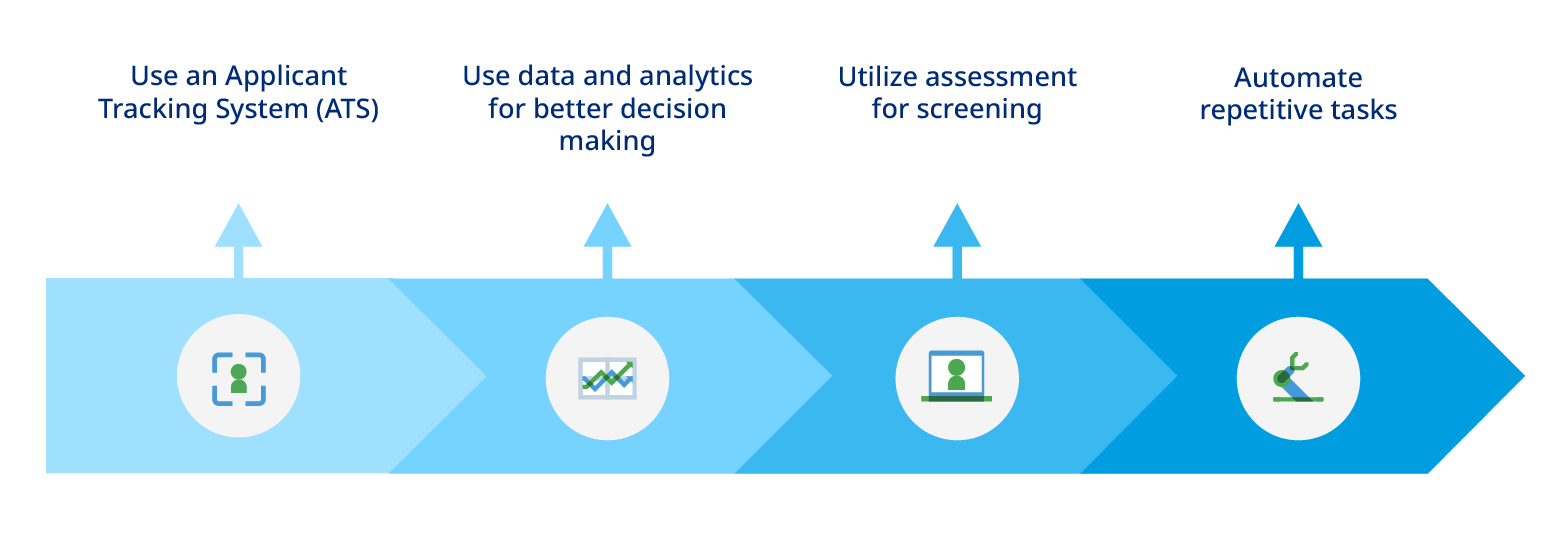With over a decade of experience providing HR technological solutions, Mercer | Mettl offers various solutions that allow your organizations to streamline and execute recruitment strategies while reducing costs and bad hires.
Mercer | Mettl’s Hiretrack combines features of three systems in a single platform. It manages applications and creates and customizes workflows with ease. The platform allows your recruiting team to appraise candidates through online assessments. The assessments give a holistic view of the candidate’s psychometric, cognitive and domain competency. Furthermore, you can organize online interviews with collaborative and structured grading while keeping digital records of everything.
You can simplify hiring with Mercer | Mettl’s Hiretrack in four steps:
Configure your requirements:
Create specific job roles and define competency on the platform with ease.
Screen candidates:
Filter out applicants using assessments and psychometric tests that can be scheduled at your convenience.
Organize interviews:
Create a panel of interviewers and schedule interviews to select the best from the screened pool of candidates.
Make the final decision:
Decide to hire after looking at briefs from the recruiting team and the candidate’s score.









 Behavioral Competencies
Behavioral Competencies Cognitive Competencies
Cognitive Competencies Coding Competencies
Coding Competencies Domain Competencies
Domain Competencies


































Would you like to comment?